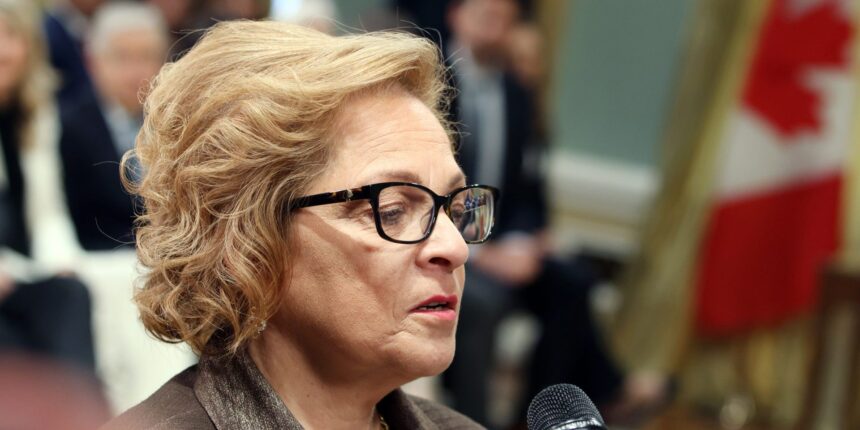The federal government’s plan to slash immigration spending by nearly a third over the next four years signals a dramatic shift in Canada’s approach to newcomers, one that experts say reflects both fiscal constraints and changing political winds.
According to internal documents obtained from Immigration, Refugees and Citizenship Canada (IRCC), the department projects a 30 percent reduction in operational spending by 2028, aligning with recently announced lower immigration targets. These cuts represent the most significant contraction of immigration services in over a decade.
“We’re seeing a recalibration that goes beyond simple belt-tightening,” says Maria Chen, immigration policy analyst at the University of Toronto’s Munk School. “This reflects a fundamental shift in how the government views immigration’s role in Canada’s future.”
The spending reductions will affect everything from processing times for permanent residency applications to settlement services in communities across the country. Small cities that have recently developed infrastructure to welcome newcomers may feel the pinch most acutely.
In Thunder Bay, where the municipal government invested $3.2 million in a newcomer welcome center last year, city councillor Raj Mathur expressed concern about the timing. “We’ve just built capacity based on federal projections. Now we’re looking at fewer arrivals and potentially less support for those who do come.”
The cuts come after years of record-high immigration targets under the Liberal government. Finance Minister Chrystia Freeland defended the move during question period last week, calling it “responsible fiscal management in changing economic times.”
“We remain committed to immigration as a driver of Canada’s growth,” Freeland stated, “but we must ensure our systems can properly support newcomers while addressing housing pressures felt by all Canadians.”
Opposition critics offer different interpretations of the policy shift. Conservative immigration critic Kyle Seeback praised the reduction as “long overdue fiscal responsibility,” while NDP immigration critic Jenny Kwan called it “abandonment of newcomers when supports are needed most.”
The spending cuts will unfold gradually, with an initial 8 percent reduction next fiscal year, followed by steeper decreases in subsequent years. Settlement service providers will see funding reductions of approximately 12 percent beginning April 2026, according to the documents.
For newcomers like Arjun Patel, who arrived from India last year and now works at a tech startup in Waterloo, the news creates uncertainty. “My parents were planning to join me through family sponsorship,” he told me during a community meeting in Kitchener. “Now I wonder how much longer that might take.”
The impact extends beyond processing times. IRCC plans to reduce staff at visa processing centers abroad, potentially affecting Canada’s ability to compete for global talent. The department also forecasts closing three of its smaller domestic processing centers by 2027, though specific locations remain unannounced.
Census data shows immigration accounted for nearly 80 percent of Canada’s population growth between 2016 and 2021. With these new targets and spending reductions, population projections will need revision, potentially affecting everything from housing development to healthcare planning.
“Communities have built growth strategies around immigration,” notes Sam Hossain, executive director of New Canadians Centre in Peterborough. “Scaling back now means municipalities need to rethink infrastructure investments and service delivery.”
The spending reductions come amid public debate about housing affordability and service capacity. A recent Angus Reid poll found 58 percent of Canadians believe immigration levels have contributed to housing pressures, though economists remain divided on the direct correlation.
Provincial responses to the federal announcement have varied. Quebec Premier François Legault welcomed the reduced targets, saying they better align with his province’s capacity. Meanwhile, Alberta Premier Danielle Smith expressed disappointment, noting her province’s labor shortages in healthcare and construction sectors.
Back in Ottawa, settlement agencies are preparing for the new reality. Mohammed Al-Masri, who runs Capital Region Newcomer Services, has already begun contingency planning. “We’ll need to do more with less,” he sighed during our conversation at his modest downtown office. “Maybe merge some programs, reduce hours. The needs won’t decrease just because the funding does.”
The government maintains these adjustments represent temporary calibration rather than permanent policy shift. Immigration Minister Sean Fraser emphasized this point at a recent press conference in Vancouver.
“Canada’s success story is an immigration story,” Fraser stated. “We’re taking a pause to strengthen our foundations, not changing course entirely.”
Critics remain skeptical of this framing. Former Immigration Minister Ahmed Hussen, now serving as chair of the Parliamentary Immigration Committee, has requested a special study on the long-term implications of these cuts.
“What concerns me isn’t just the immediate budget implications,” Hussen said in a committee meeting last Tuesday. “It’s whether we’re dismantling capacity that took years to build—capacity we’ll eventually need again.”
As Parliament rises for summer recess, these questions remain unanswered. What’s clear is that Canada’s approach to immigration has entered a new chapter—one marked by caution rather than the bold expansion that characterized recent years.
For communities and newcomers alike, this recalibration means adjusting expectations during a period of uncertainty.






